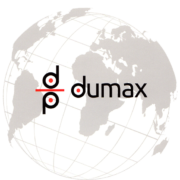ADHESION
One of the characteristics of U.V. HIGH TECH is the excellent adhesion on paper and printed cardboard.
The CROSS CUT ADHESION TEST, a method universally recognized for the valuation of the power of adhesion of inks/varnishes, has demonstrated that the U.V. HIGH TECH, for every kind of print (offset, roto offset, water-based varnish and primer) does not come off the support as it happens on the contrary with the traditional U.V. varnishes.
Advantages:
- Higher seal during the phase of folding
- Exclusion of the risk of creation of dangerous flakes in case of objects manipulated by children
- Higher quality of the finished manufacture
- Higher guarantee to receive hot stamping
GLUINESS
U.V. HIGH TECH can be glued using water-based glue of normal use in paper industry (ex. Leuenberger C248 glue).
Advantages:
- Possibility of using the sheets destined to the formation of boxes or something else, even in case of mistake of positioning of the reserves
- Reduction of costs and time for the preparation and regulation of the machine due to the possibility of fully varnishing
SAVING
U.V. HIGH TECH, thanks to the floating, guarantees a measurable saving.
If you compare in machine any traditional U.V. varnish at the moment present on the market with viscosity 60” (DIN 4 25° C) and the U.V. HIGH TECH varnish with viscosity 38” (DIN 4 25° C), it comes out that the U.V. traditional varnish penetrates much more in the support although its viscosity is almost double.
The high penetration is responsible for a high consumption of the varnish and the possible need to add floating (a very expensive additive) and even for the bad residual smell in the sheets.
In case of penetration in fact, the particles do not receive any U.V. rays so do not polymerize and cause the typical residual smell in the sheets.
If you use U.V. HIGH TECH varnish it is possible to work at lower viscosities in comparison with what happens with traditional varnishes, improving spreading and brightness.
Advantages:
- Reduction of 20 – 25% of the industrial consumption of varnish
- Reduction of the smell in the sheets and consequently in the materials the support could contact with
- Saving in the economical investments thanks to the elimination of the costs of the additives
- Uniformity of brightness on the all paper (both on the printed part and on the unprinted)





